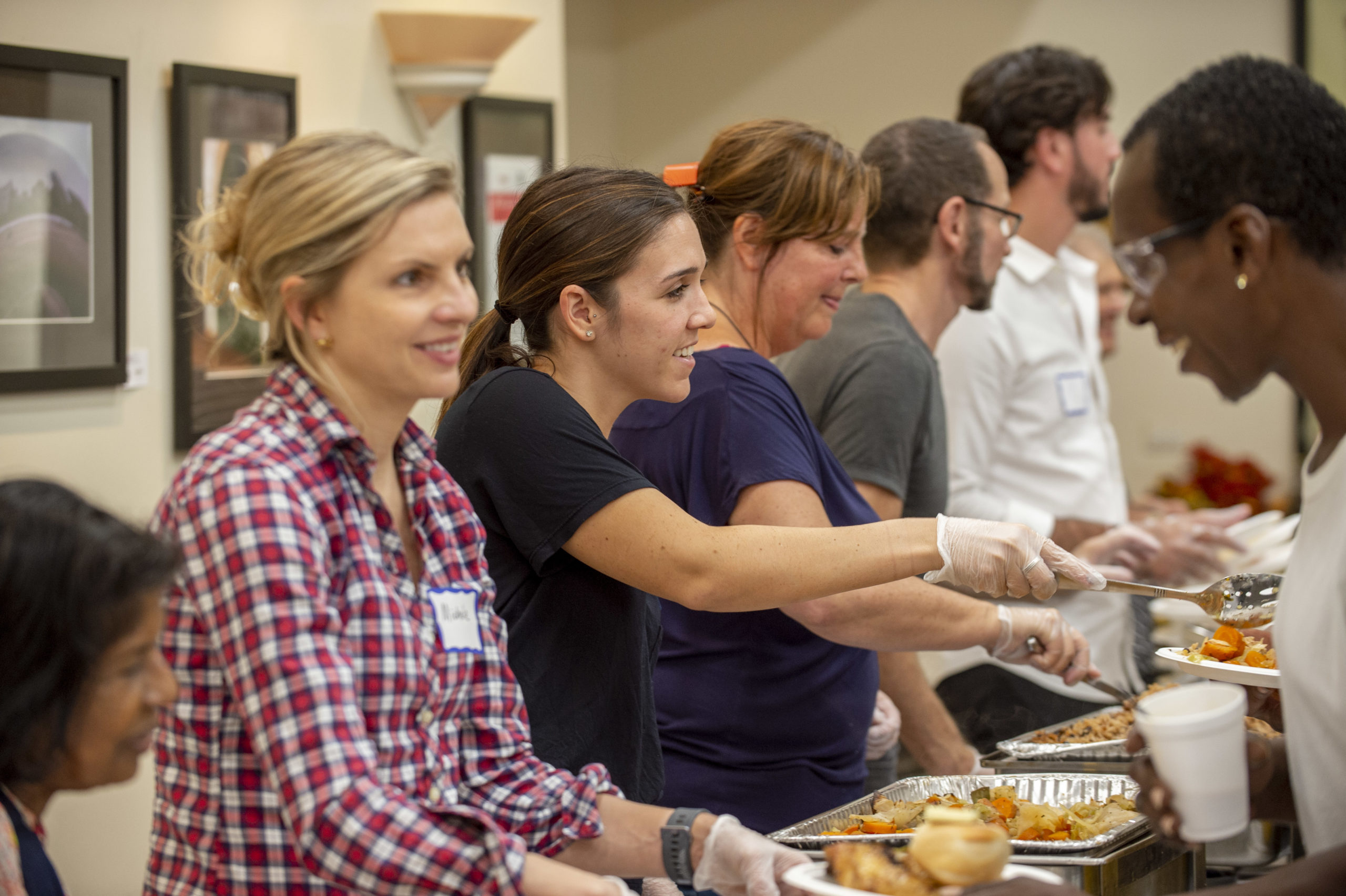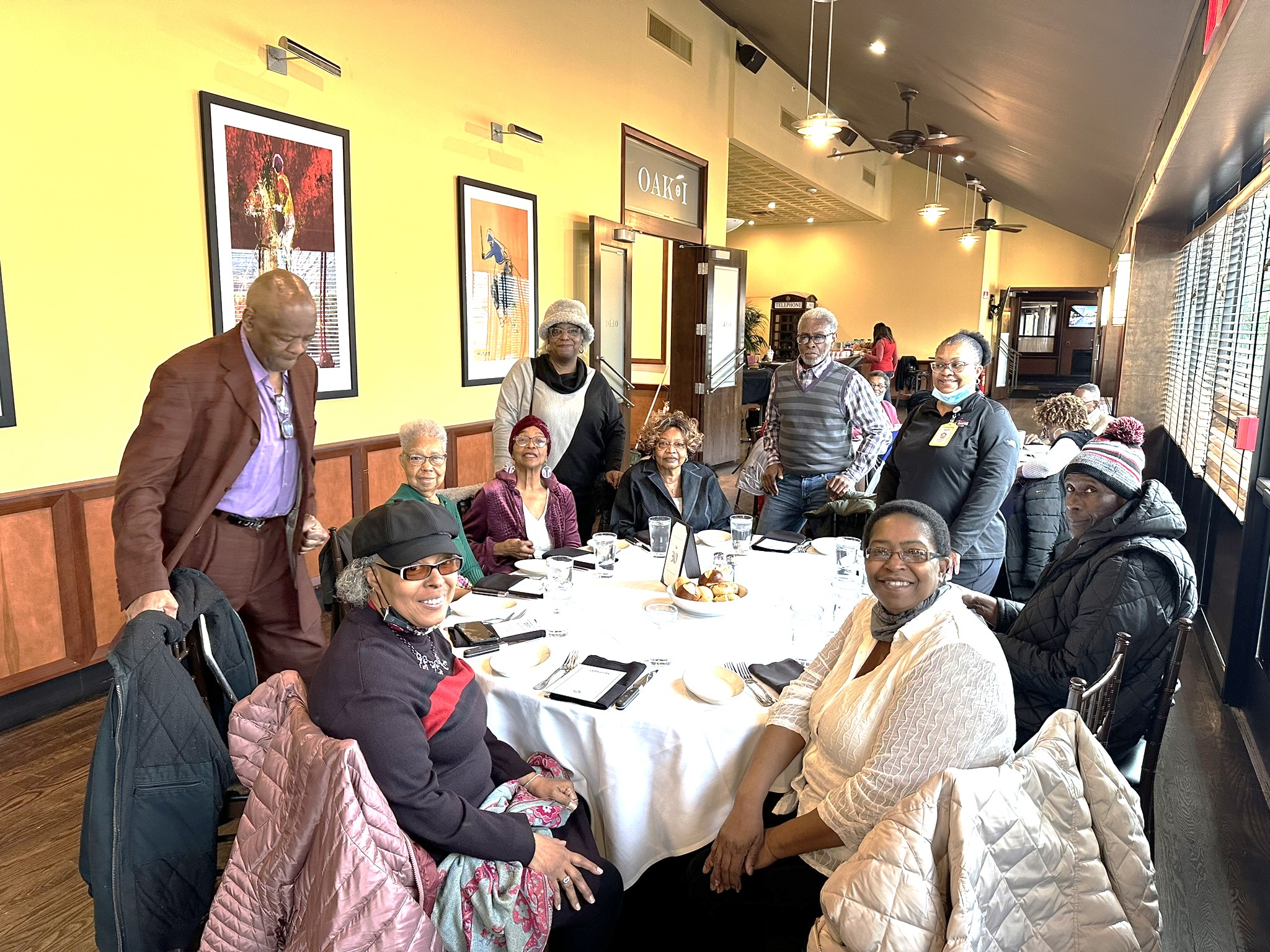“Victor was always a fixture around here! All our residents and staff knew him,” says Catholic Charities Ozanam Village Service Coordinator Aid Joyce Bailey with a laugh.
“He’s handy, can fix just about anything, and always was happy to give rides to people when they needed them. “But,” she explains, her tone turning more somber, “he is a private person and it took us a while to realize he actually was unhoused, staying in his car outside our building so he could regularly check in on his parents who lived here at the time.”
The leadership team at Ozanam Village/Matthew Manor makes an extra effort to provide housing for those who are homeless, so as soon as Bailey realized Victor was without adequate housing, they encouraged him to apply for residency and helped him complete and submit all the necessary documentation. Victor moved into Ozanam Village in August 2022.

Ozanam Village/Matthew Manor is a two-building residence for seniors with limited income. Located in Chicago’s East Garfield Park neighborhood, it is one of 19 similar Catholic Charities residences in the Chicago area. Bailey and her teammate Monique Hollerway oversee care for all 121 Ozanam/Matthew residents, ages 62-97. Some residents enjoy robust health and mobility, have attentive family members, others do not. Ensuring residents are safe, well-cared for, and can maintain their independence are top priorities. Bailey, Hollerway, and their peers at Catholic Charities’ sister sites are the heart of the residences, going above and beyond to anticipate and meet resident needs.
At Ozanam/Matthew, care coordinators meet with residents as soon as they move in to determine which services they might need (e.g. Medicaid, SNAP, literacy tutoring). They network in the community to find resources. After this initial intake, care coordination continues every day. “We are always on the lookout to make sure tenants are thriving,” says Bailey. “Our goal is for them to age in place as long as they possibly can, and we encourage their families to be an active presence. That makes such a difference.”
Maintaining self-sufficiency drives much of their work. For instance, when a resident said he needed help with food, transportation, and homemaker services, service coordinators placed a call to RTA to arrange transportation for him and set up a referral for meal delivery and homemaker services provided through a south suburban agency. With their help, the tenant was able to remain independent in his home.
In addition, service coordinators plan a calendar full of activities to engage, entertain, and assist residents—biweekly coffee socials, birthday parties, health screenings, games, and outings, to name just a few. They create and distribute a monthly newsletter to residents with important information about changes to benefits, a health topic, safety reminders, self-care tips, a welcome to new residents, recipes, games, and more. And, they collaborate closely with a resident-led Tenant Council to uncover new or emerging needs and strategize how best to address them.
On a regular basis, service coordinators at all 19 sites meet to share ideas and resources and to ensure excellent, consistent service across venues.
In the words of a grateful tenant, “it feels good to have a place to live, somewhere where people know me and I know them,” says Victor. “I am thankful to the people here who cared about me and helped me to get inside.”


